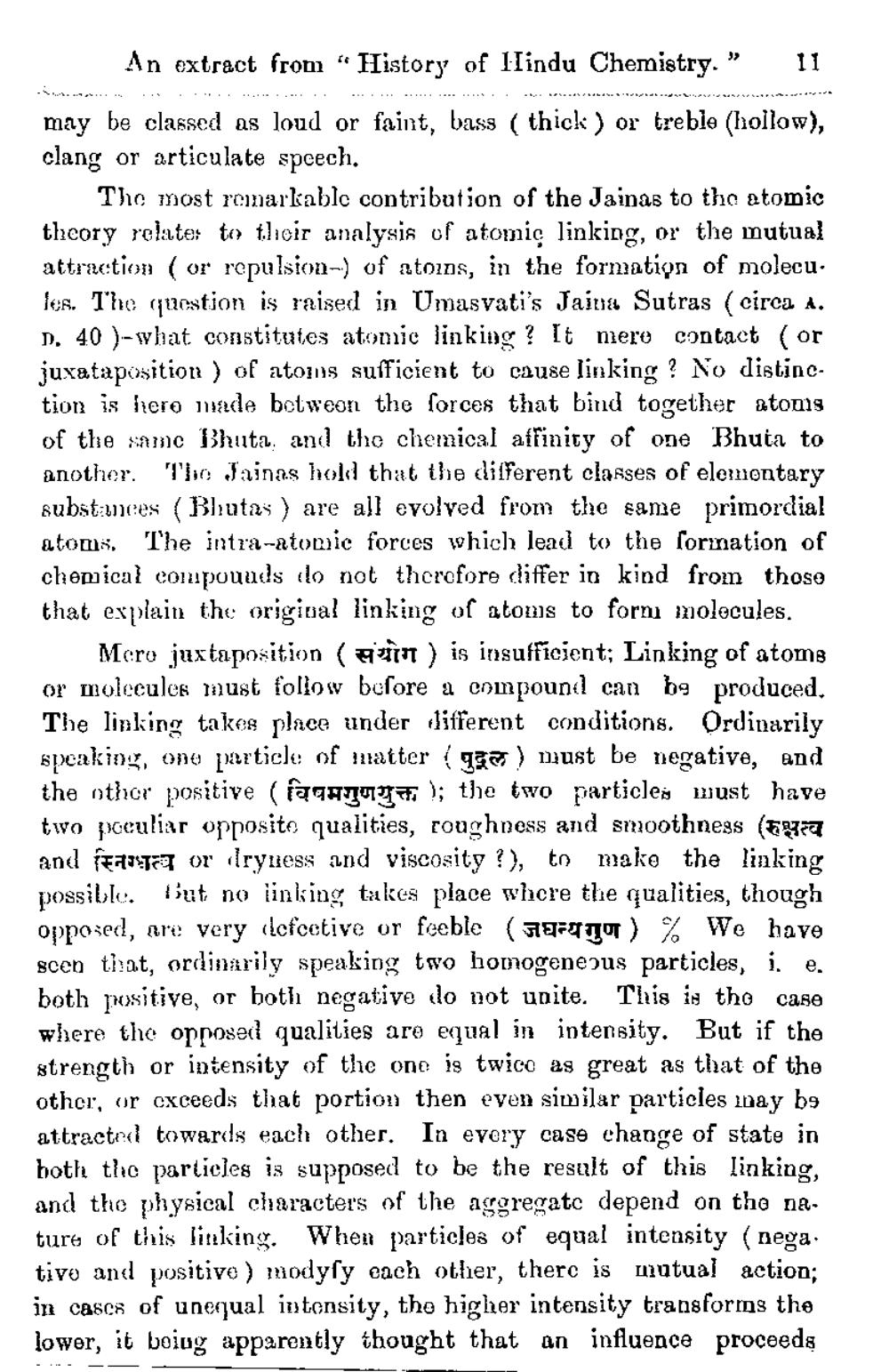________________
An extract from "History of Hindu Chemistry. 11
may be classed as loud or faint, bass (thick) or treble (hollow), clang or articulate speech.
در
The most remarkable contribution of the Jainas to the atomic theory relates to their analysis of atomic linking, or the mutual attraction (or repulsion-) of atoms, in the formation of molecu les. The question is raised in Umasvati's Jaina Sutras (circa A. D. 40)-what constitutes atomic linking? It mere contact (or juxataposition) of atoms sufficient to cause linking? No distinction is here made between the forces that bind together atoms of the same Bhuta, and the chemical affinity of one Bhuta to another. The Jainas hold that the different classes of elementary substances (Bhutas) are all evolved from the same primordial atoms. The intra-atomic forces which lead to the formation of chemical compounds do not therefore differ in kind from those that explain the original linking of atoms to form molecules.
Mero juxtaposition (ˆn ) is insufficient; Linking of atoms or molecules must follow before a compound can be produced. The linking takes place under different conditions. Ordinarily speaking, one particle of matter (g) must be negative, and the other positive (fangaga); the two particles must have two peculiar opposite qualities, roughness and smoothness (Fya and fear or dryness and viscosity ?), to make the linking possible. But no linking takes place where the qualities, though opposed, are very defective or feeble () % We have scen that, ordinarily speaking two homogeneous particles, i. e. both positive, or both negative do not unite. This is the case where the opposed qualities are equal in intensity. But if the strength or intensity of the one is twice as great as that of the other, or exceeds that portion then even similar particles may be attracted towards each other. In every case change of state in both the particles is supposed to be the result of this linking, and the physical characters of the aggregate depend on the nature of this linking. When particles of equal intensity (nega. tive and positive) modyfy each other, there is mutual action; in cases of unequal intensity, the higher intensity transforms the lower, it being apparently thought that an influence proceeds




